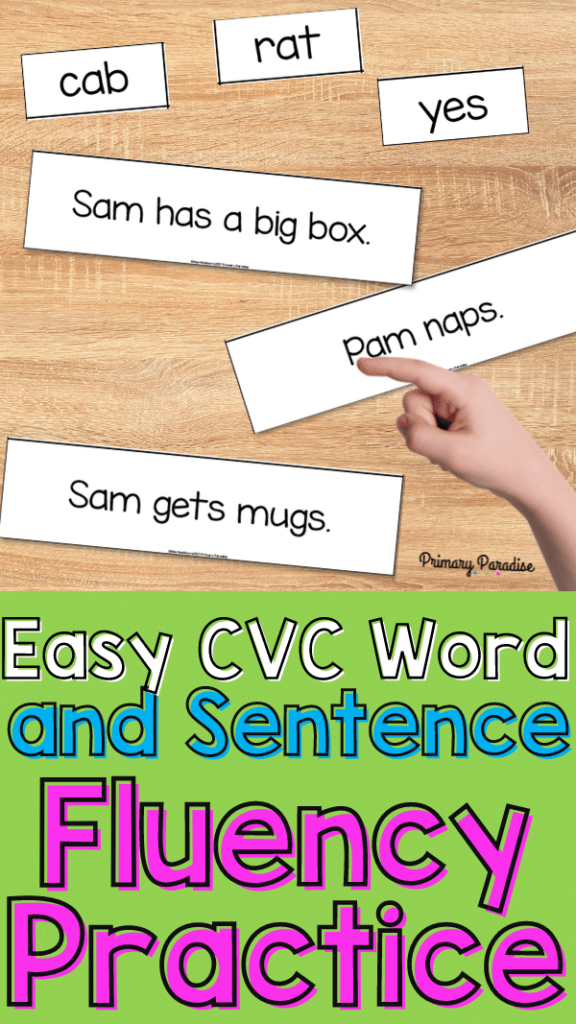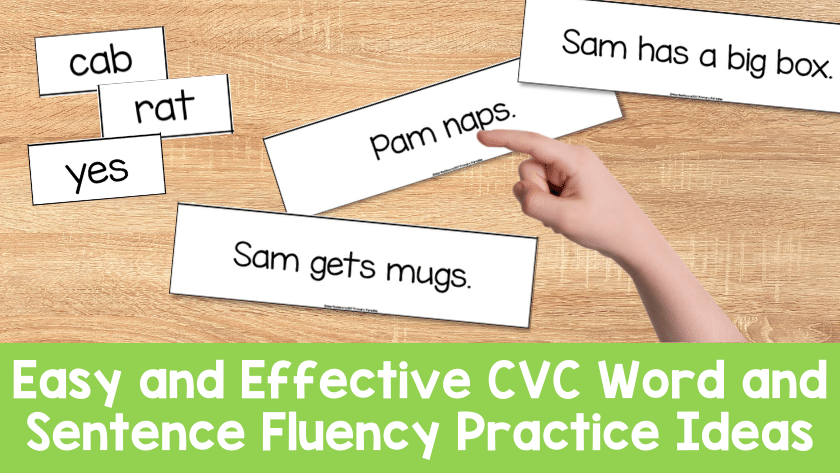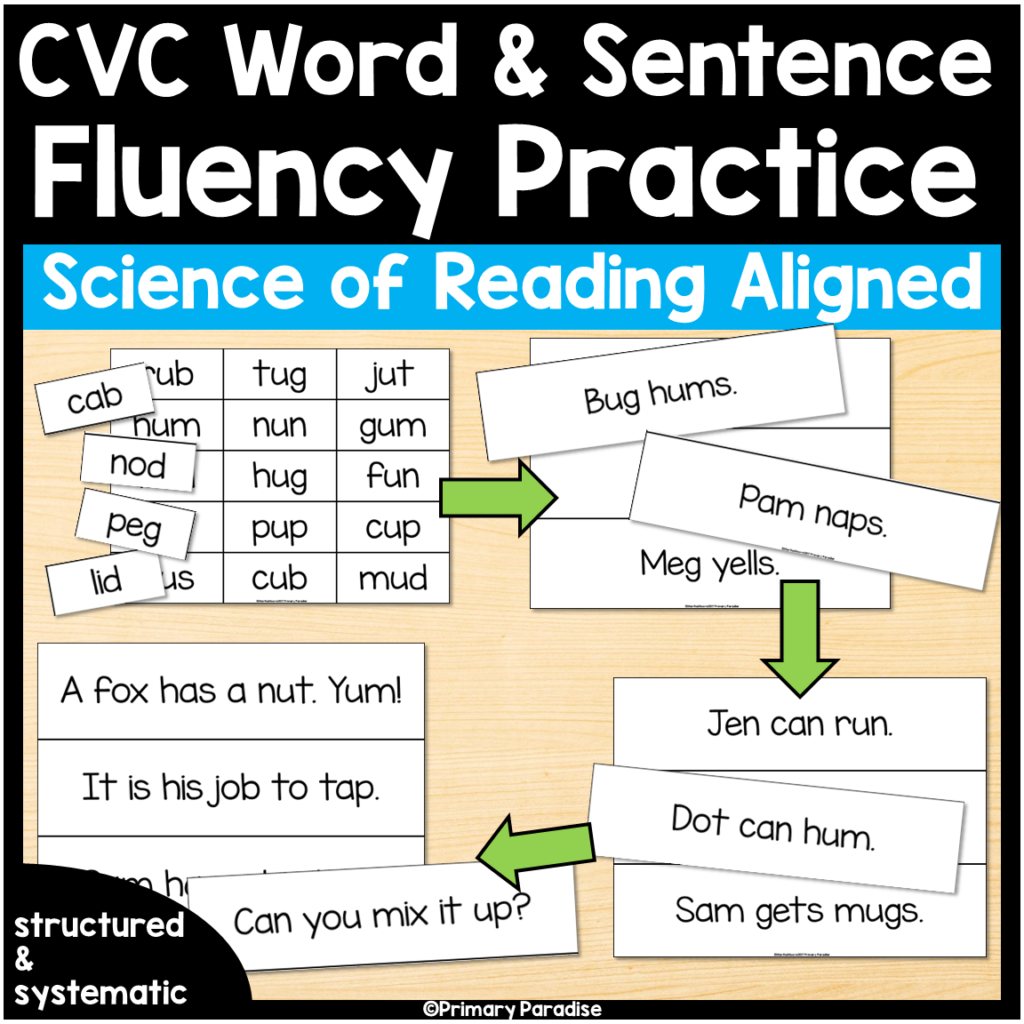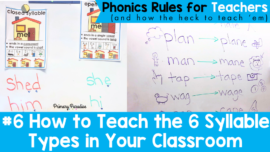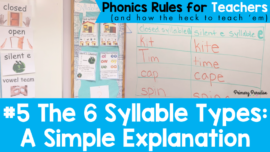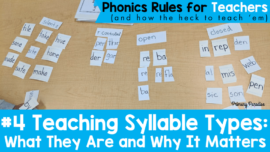CVC words and CVC sentence fluency is an important skills for early readers in kindergarten and first grade to practice. It’s also important to teach these skills in a structured and systematic way. Here’s how to work on CVC word and CVC sentence fluency in your classroom.
Ways to Practice CVC Words
Before you put sentences in front of your students, you want to start with practicing reading CVC words. And, before that, students need to have a solid understanding of single letter sounds and short vowels. Here are some great activities you can try if your students are just working on letter sounds and beginning to blend CVC words. Once students are ready, you can begin focusing on CVC words. I like to make some CVC word cards that can be used in a variety of ways. Here are 4 ways to practice CVC word fluency.
1. Print two sets and play memory. Be sure to require students to read the word before taking a match.
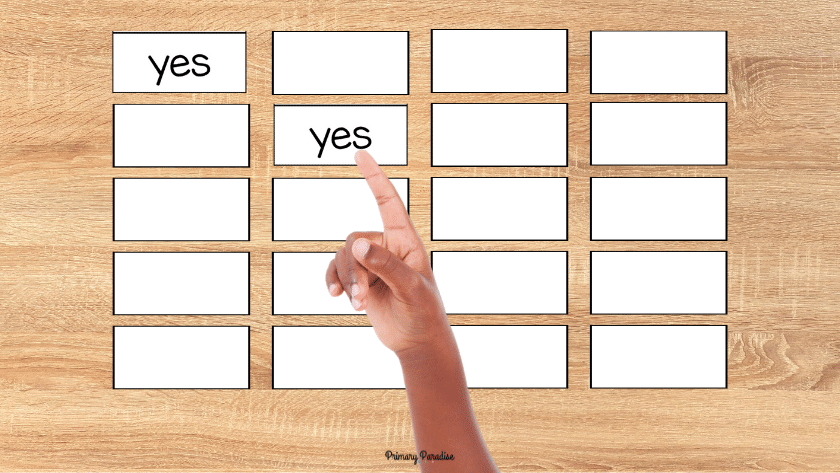
2. Flip the cards upside down and have students select one card at a time and read it. Continue to play, but each time add another card. So, first, they read “cub” then the second time they read “cub” and “fun”. Then the third time they read “cub”, “fun”, and “tug”.
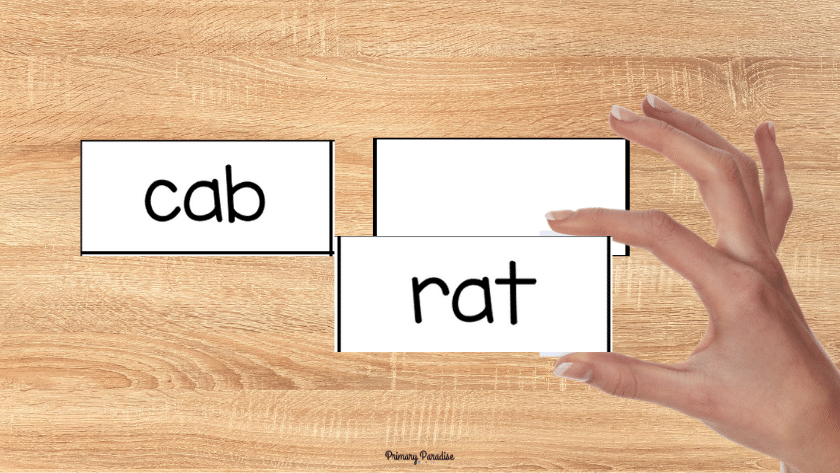
3. Give students cards with more than one vowel sound. Have them sort them by vowel and then practice reading.

4. For readers who are struggling with decoding CVC words, use a small strip of paper to cover all but the first letter. Have them produce this sound. Slide the paper to the right to show the first two letters. Have them produce both sounds. Finally, reveal the last letter and blend.

How to Move from Words to Sentences
Once students are comfortable decoding single CVC words, you can move on to two word sentences. I recommend sticking with two word CVC sentences with the same vowel sound at first. Then, you can move to three-work sentences. Here is where I will start mixing vowel sounds. Once students have mastered three-words, you can go to four-word sentences and beyond! Here are some simple ways to practice decoding CVC sentences. I highly recommend, at least at first, to keep high frequency words that are not short vowel or CVC words to a minimum. Stick with the most common words like the, a, you, and to. I will also use words like is and has. While these are high frequency words, they have short vowels. I also teach my students very early on that the letter s often makes the /z/ sound after a voiced sound. In fact, s represents the /z/ sound 64% of the time. Z represents the /z/ sound only 23% of the time. (Source)
So, here are 3 simple and fun ways to practice CVC sentence fluency.
Ways to Practice CVC Sentence Fluency
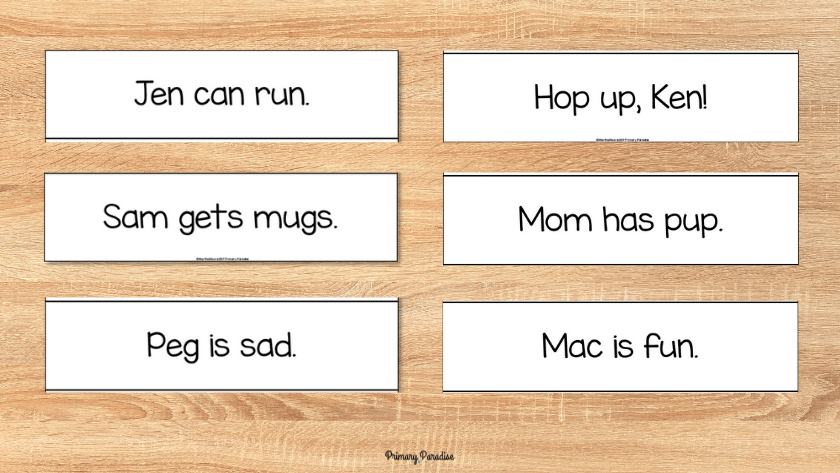
1. Lay a number the sentences strips out face up and let each student pick one, read it, and then flip it over until they have read all of the sentences. You can do this first while focusing on just one vowel sound and then with more than one vowel sound.
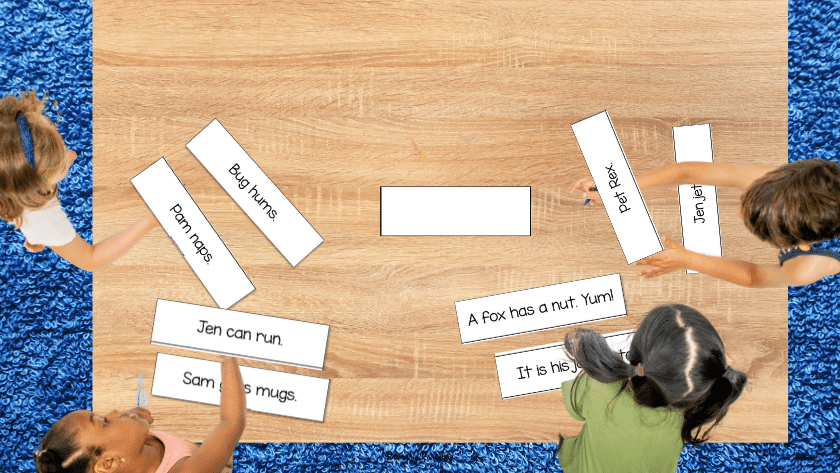
2. Flip the cards upside down and have students select one card at a time and read it. Continue to play, but each time add another card. So, first, they read “Pet Rex.” then the second time they read “Pet Rex” and “Pam naps.”. Then the third time they read “Pet Rex”, “Pam naps.”, and “Bug hums.”.
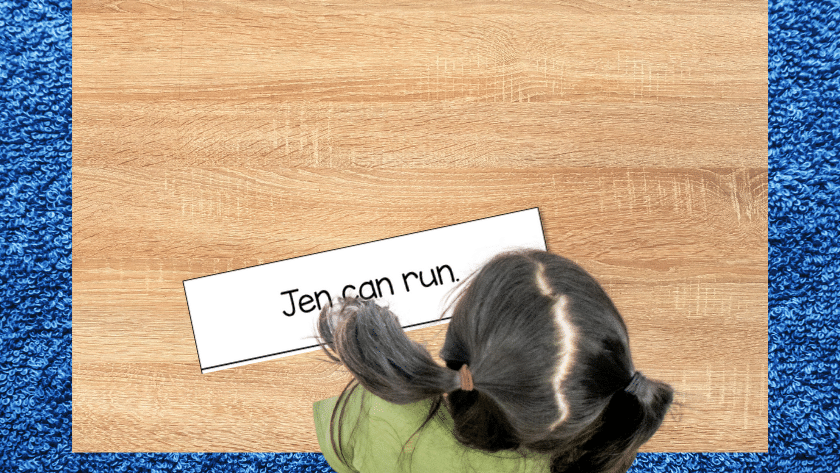
3. Have students pick a sentence. First have each student go around and read their sentence in a normal voice. Then go around again and tell them to read it in different types of voices such as robot, silly, high, low, angry, sad, happy, scared and so on. You can also add more than one sentence during this exercise.
Writing Your Own Sentences
If you’re going to make your own CVC word and sentence cards, you can find a handy list of CVC words by vowel sound in this blog post.
Or Save Yourself Time
If you’d rather not spend time making word cards and coming up with sentences, I’ve got you covered with my CVC Word and Sentence Fluency Resource! This resource is designed to help your students practice decoding CVC short vowel sounds in a structured and systematic way. These are perfect to use in small groups and one on one. You can also use them in a whole group setting, although I recommend blowing up the cards so they are bigger and easier to see.
This resource includes:
- 75 CVC word cards organized by short vowel sound (15 for each short vowel)
- 30 two-word CVC sentences organized by short vowel sounds
- 30 three-word CVC sentences with mixed vowel sounds
- 30 4+ word CVC sentences with mixed vowel sounds (These sentences ONLY use the high frequency words- the, a, to, you.)
You can find the resource in my TpT here.
